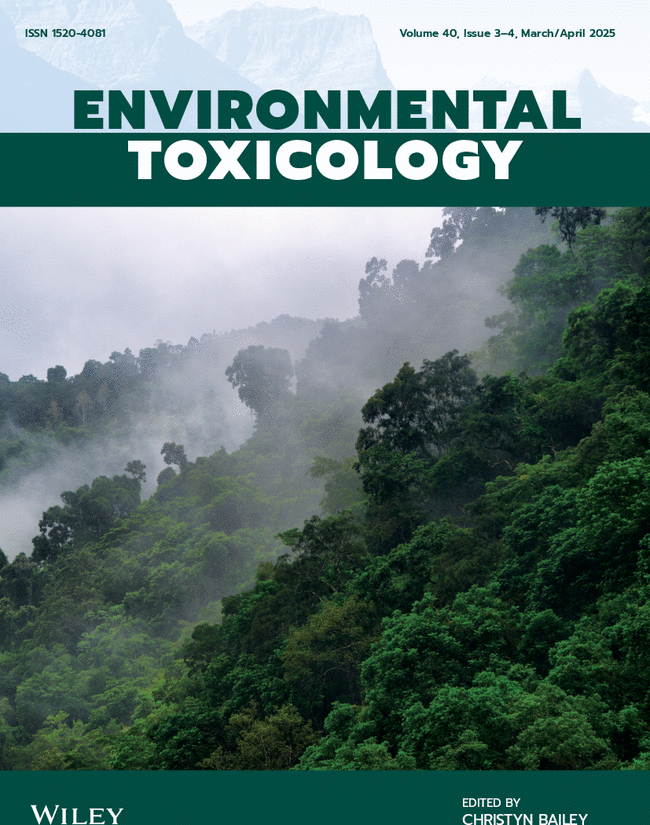A Wiley journal has retracted more than two dozen articles in the last few months for peer review issues.
The articles, which appeared in Environmental Toxicology, have been retracted in batches, the latest on February 16-17, with previous sets in January and November.
The retraction notices of all 26 papers read in part:
Following an investigation by the publisher, the parties have concluded that this article was accepted solely on the basis of a compromised peer review process. Therefore, the article must be retracted.
All authors of the retracted papers are affiliated with universities in China. Most of the corresponding authors had email domains not associated with a university or research organization, containing random sequences of letters and numbers, a potential sign of paper mill activity.
A representative from the Wiley press office told us in an email the journal had “identified concerning peer review patterns associated with manuscripts in progress as well as some previously published papers.” The batches in November and January were retracted as part of the same investigation, the representative confirmed. They did not immediately respond to our request for additional information regarding the February retractions or inform us whether they plan to continue retracting papers.
This isn’t the first time Wiley has had mass retractions for peer review anomalies. In June 2024, International Wound Journal retracted dozens of articles for “compromised” peer review. And since late 2022, the publisher has retracted more than 11,000 papers from Hindawi journals, which Wiley acquired in 2021.
Nine of the retraction notices stated that one or more of the authors disagreed with the retractions. Zheng Lufeng, associate professor at China Pharmaceutical University in Nanjing, was co-corresponding author of the retracted article “MiR-375 impairs breast cancer cell stemness by targeting the KLF5/G6PD signaling axis.” He told us in an email the authors were not involved in the peer review process. “This is the editor’s responsibility,” he said. Lufeng also wrote he hoped the editors would amend the retraction notices to indicate the retractions had “nothing to do” with the authors.
Aside from Lufeng, none of the corresponding authors responded to our requests for comment.
Of the papers retracted so far, all but two were published in 2024 issues or online under Wiley’s “EarlyView” service.
The notices stated all articles were “retracted by agreement between the journal Editor-in-Chief” and Wiley Periodicals LLC. Paul B. Tchounwou, associate dean at Morgan State University, was the editor-in-chief of the journal until November. The current editor-in-chief is Christyn Bailey, a full-time editor at Wiley. Neither Tchounwou nor Bailey responded to our request for comment.
Like Retraction Watch? You can make a tax-deductible contribution to support our work, follow us on X or Bluesky, like us on Facebook, follow us on LinkedIn, add us to your RSS reader, or subscribe to our daily digest. If you find a retraction that’s not in our database, you can let us know here. For comments or feedback, email us at [email protected].

It makes me very curious to know how the peer review process was compromised. Did the authors submit the names of those who should review their papers? (And did the Editors accept these without any review?)
I have acted as editor for this type of journal a number of years ago, although it was MDPI. Prof Lufeng could well be totally innocent, along with the other authors.
In my case, the editor could in no way manipulate the review process. The reviewers were chosen by the journal staff, although one reviewer may have been one of those suggested by the authors, which most journals will do.
The guest editor’s role was basically to suggest potential authors and encourage them to submit. The guest editor could make a decision based on reviews, but was limited in what they could do for an author, even if they wanted to manipulate the outcome. A rejection was a rejection, major was major and so on. The chief editor (unknown to the guest editor) makes the final decision. And I got the impression that they do not just rubber stamp, unlike many Elsevier journals, where the chief doesn’t bother at all, and associate just keep bouncing back to the author regardless how minor and/or dumb reviewer comments can be, unable to make any kind of editorial decision.
I had heard that prior to this there was a lot of manipulation, which may be why the MDPI journals were so strict, limiting the role and power of the editor (I heard the same story from friends vis a vis other MDPI journals).
This is not to say that garbage doesn’t get through, of course it does, but this is down primarily to the reviewers not doing their job properly and the business model, which provides a perverse incentive.
Having said that, I was surprised to learn that the process is not as corrupted as I had imagined – they won’t accept garbage just to make money. I think they try to pick guest editors carefully to guarantee as far as possible good submissions via the editor’s contacts.
Where it breaks down is, as I said, substandard peer review. But this is something all journals suffer from, including top journals. Also of course, they get few submissions from the top names in the field.
For people who ask about manipulating the peer review process. Usually it happens with authors who know the editor in chief and give him unofficially the name of reviewers real or fake or by being friends with the guest editor and giving to him reviewer names.